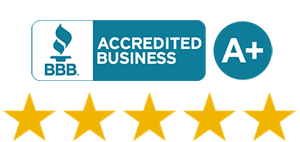Cleaning up after a flood is essential to remove hazards and prevent further damage. It is important to take the necessary steps to ensure the affected area is properly restored. When dealing with post-flood clean up, there are several key tasks to consider.
Key Takeaways:
- Remove carpet, upholstered furniture, and stuffed animals that have come in contact with contaminated floodwaters.
- Photograph damaged property for insurance purposes.
- Wash curtains, clothing, and bedding with hot soapy water. Use bleach if possible.
- Flush rugs and furniture with clean water, shampoo, and air-dry them.
- Wear protective clothing, boots, gloves, and goggles when cleaning to protect against germs, mold, and cleaning chemicals.
Removing Contaminated Items
The first step in flood clean up is to remove any items that have been in contact with contaminated floodwaters. This includes carpet, upholstered furniture, and stuffed animals. These items can harbor harmful bacteria and pathogens, posing a risk to your health. It is crucial to handle these items with care and dispose of them properly. Take photographs of the damaged property for insurance purposes.
To ensure thorough cleaning, it is important to wash curtains, clothing, and bedding that have been affected by the floodwaters. Use hot soapy water and, if possible, add bleach to disinfect these items. Rugs and furniture should be flushed with clean water and then shampooed. Allow them to air-dry completely before using or storing them again.
During the cleanup process, it is essential to protect yourself from potential hazards. Wear protective clothing, including boots, gloves, and goggles, to safeguard against germs, mold, and cleaning chemicals. Use soap or disinfectant cleaning products to clean the affected areas. Open windows and use fans to control fumes and dust. Ventilate the space properly to ensure your safety.
Drying the flooded areas is crucial to prevent the growth of mold. Within 48 hours, make sure to thoroughly dry the affected areas. Discard any materials that cannot be cleaned or completely dried. Using fans and running bathroom and kitchen ventilators will help circulate the air and aid in the drying process. This will also reduce the risk of mold development.
If you are faced with a large amount of mold or extensive flood damage, it is advisable to seek professional help. Professionals have the expertise and equipment to handle these situations effectively and safely. Additionally, if you or someone in your household has asthma or allergies, consult with a medical provider before undertaking the cleanup process to ensure proper precautions are taken.
Laundering and Cleaning
After removing contaminated items, it is important to properly clean and sanitize any salvageable materials. This will help prevent the spread of germs and ensure a safe and healthy environment. Here are the steps to follow for effective laundering and cleaning after a flood:
- Wash curtains, clothing, and bedding: Start by washing these items in hot soapy water. If possible, add bleach to the wash cycle to help kill any remaining bacteria or mold spores. Once washed, air-dry them thoroughly in a well-ventilated area. This will help eliminate any lingering odors as well.
- Flush rugs and furniture: For rugs and furniture that can be salvaged, thoroughly flush them with clean water to remove any dirt or debris. Then, shampoo them using a mild detergent and rinse thoroughly. Allow them to air-dry completely before returning them to their original locations.
- Sanitize surfaces: Use a mixture of hot soapy water and bleach to clean and sanitize all hard surfaces. Pay special attention to areas that were in direct contact with floodwaters, such as countertops, floors, and walls. Make sure to wear protective clothing, gloves, and goggles during this process to avoid skin irritation or exposure to harmful chemicals.
- Air-dry everything: After cleaning, make sure to air-dry all cleaned materials thoroughly. This will help prevent the growth of mold and mildew. Open windows and use fans to ensure proper air circulation. Running bathroom and kitchen ventilators can also help remove excess moisture from the air.
Remember to follow all safety precautions and use appropriate cleaning products when laundering and cleaning after a flood. It is also important to refer to any guidelines or recommendations provided by local authorities or professional restoration services. By taking these steps, you can ensure a thorough and effective clean-up process, promoting a safe and healthy living environment.
Protective Measures
To protect yourself from germs, mold, and cleaning chemicals, it is crucial to wear protective clothing and gear. When cleaning up after a flood, follow these protective measures:
- Wear gloves made of rubber or latex to protect your hands from harmful substances and contaminants.
- Put on goggles or safety glasses to shield your eyes from splashes and any airborne particles.
- Wear a mask or respirator to prevent inhaling mold spores, dust, and other pollutants.
- Dress in long sleeves, pants, and boots to cover your skin and reduce the risk of exposure to floodwater contaminants.
Additionally, it is important to use cleaning chemicals cautiously. Follow the instructions provided on the labels and handle the products with care. Keep the windows open and use fans to improve ventilation and control fumes and dust.
Preventing the Spread of Mold and Bacteria
Mold and bacteria can easily spread during flood cleanup, posing health risks. Take the following precautions:
- Isolate the affected area by closing doors and windows to prevent the spread of contaminants to unaffected parts of the house.
- Disinfect and clean all surfaces thoroughly using appropriate cleaning agents.
- Dispose of contaminated materials, such as damaged carpets, insulation, and drywall, as they can harbor mold and bacteria.
- Regularly wash your hands with soap and clean water, especially after handling contaminated items or coming into contact with floodwater.
By following these protective measures, you can minimize the health risks associated with flood cleanup and ensure your safety as you restore your home to its pre-flood condition.
Drying the Flooded Areas
Properly drying the flooded areas is essential to prevent mold growth and further damage. Mold can begin to grow within 24 to 48 hours after a flood, so it’s crucial to act quickly. Here are some steps to follow:
- Remove any standing water using a wet-dry vacuum or pump. Be cautious of electrical hazards and use proper safety measures.
- Thoroughly clean and disinfect the affected surfaces. Use a mixture of one cup of bleach to one gallon of water to kill any bacteria or mold that may be present.
- Open windows and doors to promote air circulation. Use fans to help dry out the area faster, and run bathroom and kitchen ventilators to remove excess moisture.
- If possible, remove any wet materials such as carpets, upholstery, or drywall that cannot be salvaged. These can harbor mold and should be discarded to prevent further contamination.
- Once the area is dry, monitor it closely for any signs of mold growth. If you notice any, take immediate action to address the issue.
Extra Tips for Effective Drying:
- Use dehumidifiers to remove excess moisture from the air.
- Keep windows and doors open whenever possible to allow fresh air to circulate.
- If the weather permits, utilize natural sunlight to aid in the drying process.
- Consider renting industrial-grade drying equipment for large-scale restoration projects.
- Inspect hidden spaces such as crawl spaces and behind walls for trapped moisture. Use proper ventilation and dehumidification in these areas as well.
Seeking Professional Help
In cases of severe mold or extensive flood damage, it may be necessary to hire a professional for efficient and safe cleanup. These professionals are experienced in handling large amounts of mold and mitigating flood damage effectively.
For individuals with asthma or allergies, seeking professional help is especially important. These experts have the knowledge and resources to safely remove the mold and restore the affected area without exacerbating respiratory symptoms.
When choosing a professional for flood cleanup, it is advisable to look for reputable companies with experience in handling similar situations. They should be licensed, bonded, and insured to ensure quality work and peace of mind.
By engaging professional help, you can streamline the cleanup process and make sure that all necessary steps are taken to restore your property to its pre-flood condition. Remember to document the damage thoroughly for insurance purposes and promptly contact your insurance company to initiate the claims process.
Conclusion
While some minor flood cleanups can be handled independently, extensive mold growth and severe flood damage require the expertise of professionals. By hiring a professional, you can ensure that your property is thoroughly cleaned and restored, reducing the risk of further complications.
Remember to prioritize your safety and health throughout the cleanup process. Consult with professionals, document the damage, and reach out to your insurance company to get the support you need for a successful flood recovery.
Precautions and Safety Measures
Before starting the cleanup, it is important to take necessary precautions and follow safety measures to ensure a safe and effective restoration process. The following guidelines will help you navigate the cleanup process and protect yourself and your property:
- Ensure that the electricity and gas supply to the affected area is turned off before entering. If you are unsure about the safety of the utilities, contact a professional.
- Wear protective clothing, including gloves, boots, and goggles, to safeguard against germs, mold, and cleaning chemicals. This will minimize the risk of exposure to hazardous substances.
- Use soap or disinfectant cleaning products to thoroughly clean surfaces and items that have been contaminated by floodwaters. This will help reduce the potential for mold growth and the spread of harmful bacteria.
- Open windows and doors to allow fresh air to circulate and use fans to control fumes and dust. This will help improve ventilation and reduce the concentration of volatile chemicals in the air.
In addition to these precautions, there are specific safety measures to consider when dealing with water-logged furniture, floors, walls, and basements:
Remember to document all damage for insurance purposes. Take photographs of the affected areas and damaged property before you begin the cleanup process. Promptly contact your insurance company to initiate the claims process and seek their guidance throughout the restoration process.
Documentation and Insurance
Proper documentation of the flood damage is crucial for insurance purposes and expediting the claims process. When dealing with the aftermath of a flood, it is essential to gather evidence of the damage to ensure that you receive the compensation you deserve. To assist you in this process, here are some important steps to follow:
- Document the damage: Take photographs or videos of the affected areas, capturing the extent of the flood damage. Make sure to include close-up shots of any items or structures that have been destroyed or severely impacted. This visual evidence will help support your insurance claim.
- Create a detailed inventory: List all damaged items, including their estimated value and age. Include descriptions and any relevant receipts if available. This inventory will serve as a comprehensive record of your losses and assist the insurance company in assessing your claim.
- Save receipts and invoices: Keep track of any expenses related to the flood cleanup and restoration process. This includes receipts for cleaning supplies, contractors hired, and temporary accommodation costs. These documents will help you recover eligible costs when filing your insurance claim.
- Contact your insurance company: Notify your insurance provider as soon as possible and provide them with the necessary documentation to initiate the claims process. Be prepared to answer any questions they may have and provide additional evidence if requested. Following their instructions and communicating promptly will help expedite your claim.
Remember, the more thorough and organized your documentation, the smoother the claims process will be. Take the time to gather all the necessary information and reach out to your insurance company promptly to begin the recovery process.
Conclusion
Proper cleaning and restoration after a flood are vital for a successful flood recovery. After experiencing a flood, it is crucial to take immediate action to remove hazards and prevent the growth of mold. By following a few essential steps, you can effectively clean up and restore your home or property.
The first step is to remove any carpet, upholstered furniture, and stuffed animals that have come in contact with contaminated floodwaters. It is also important to document the damage by taking photographs for insurance purposes. This documentation will help with the claims process and ensure you receive the necessary coverage.
To clean and sanitize the affected items, wash curtains, clothing, and bedding with hot soapy water. If possible, use bleach to further disinfect them. Remember to flush rugs and furniture with clean water, shampoo them, and allow them to air-dry completely. This thorough cleaning process will help eliminate any potential health risks.
During the cleanup, it is crucial to prioritize your safety. Wear protective clothing, boots, gloves, and goggles to protect against germs, mold, and cleaning chemicals. Use soap or disinfectant cleaning products, and ensure proper ventilation by opening windows and using fans to control fumes and dust.
The key to preventing mold growth is to dry the flooded areas thoroughly within 48 hours. Any materials that cannot be cleaned or dried completely should be discarded. Use fans and run bathroom and kitchen ventilators to keep the air circulating and aid in the drying process.
If you are dealing with a large amount of mold or extensive flood damage, it may be wise to seek professional help. Additionally, individuals with asthma or allergies should consult their medical provider before starting the cleanup process to ensure their safety.
Lastly, it is crucial to take the necessary safety measures before entering the property, remove water-logged furniture and items, clean the floors, walls, and basement, and gradually pump out flooded basements to avoid structural damage. Remember to carefully document the damage for insurance purposes and promptly contact your insurance company to initiate the claims process.
By following these steps and taking the proper precautions, you can effectively clean up after a flood and restore your property to its pre-flood condition. Remember, a thorough and thoughtful cleanup is essential for a successful flood recovery.





